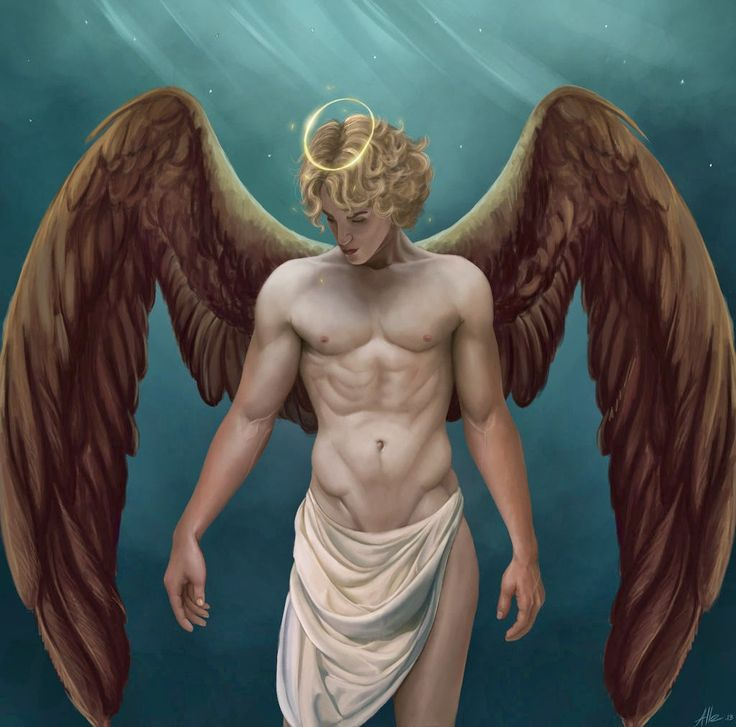Top 7 Most Powerful Princes of Hell in Western Religion
The Seven Princes of Hell, according to Peter Binsfield (German Bishop and Religious Scholar), are personifications of the Seven Deadly Sins. The Seven Princes ... read more...were the devils' lords in the Abrahamic Underworld, also known as Hell. Dark and perilous beings with enormous strength and presence. With a wave of their hands, entire expanses of land would be transformed into inhospitable wastelands. With a simple command, an army would surge out to crush their rivals, more scared of failing their leader than of their opponents' pointed spears. They were both physical and emotional monsters. Their souls were hardened by ambition and Faustian efficiency, making them ruthless and vicious. For years, Lucifer has structured Hell into a ruling body known as the Seven Princes, with the principal seven reigning over various, huge sections of their lands. Each Prince was in charge of his or her own subjects and domains. Many people appreciated how well-organized this system was, yet a few people despised being pushed to the bottom so that their colleagues might be at the top. The Seven Archangels are their counterparts and rivals. Let's take a closer look at each prince of hell in the following Toplist article.
-
Before the biblical God created the world, he first created the heavens, and then he created the cherubs, angels, and archangels within the heavens. The Archangels were the highest-ranking angels and the primary messengers of God himself. Among these Archangels was Lucifer, the highest Archangel of them all. In Demonology, Lucifer represents the sin of Pride, one of the seven deadly sins.
He was characterized as the most beautiful creature God had ever made, a magnificent person who was flawless in every way. But, in comparison to his colleagues, Lucifer was so flawless, so attractive, so divine, and so powerful that he became haughty. His superior attributes to God's other creations prompted him to become arrogant, and he eventually believed that he should be in God's position. He wished to become God. Given that he was regarded as more worthy to be in God's presence than anyone else, and that he arguably understood God better than anyone else, Lucifer could think of no one better than himself to destroy his Lord. It could even be argued that his ambition exceeds that of gods, that he desires not only to take God's place but also a position higher than that of God.
Lucifer's pride would drive him to act on his assumptions that he was really more powerful than God. It was pride that blinded him, the pride that drove him down a path of haughtiness, and pride that saw him begin to manipulate the other angels into serving him; after all, his intellect was greater than theirs, so fooling them was not beyond his means. While some angels remained faithful to God, many of the fallen angels, like Lucifer, began to regard him as the superior entity.
With a third of the angels on his side, Lucifer launches an attack on God, sparking a titanic battle for the sky. But Lucifer had not anticipated the overwhelming opposition put up by another Archangel, Michael. Lucifer transforms into a dragon after failing to overcome Michael in his current form. And there was a conflict in heaven, Michael and his angels fought against the dragon and the dragon, and his angels did not prevail; nor was their seat in heaven found. While you could argue that Lucifer had the bravery to rebel in the first place, many would argue that this was more so blind hubris, he is finally destroyed by Archangel Michael. This demonstrates how powerful the biblical God is, as Lucifer is defeated without the need for God to intervene. His other namesake - Satan is the one he obtains after being defeated. Lucifer's fall is more than simply a loss of pride; he loses everything. He is not only rejected by God but he is also expelled from heaven, along with all the other angels who supported him. God put Adam and Eve to the test by banning them from eating from the tree of knowledge when he created them. He entered the Garden of Eden under the guise of a snake after spotting a chance to mock God.

Pinterest 
When Satan used a serpent to speak to Eve, she joined his rebellion against God - jw.org -
Mammon, which loosely translates to mean money, is the second demon Binsfeld described. He represents the next sin we will discuss, greed.
Scripture uses the term "Mammon" to refer to concepts related to money, wealth, and greed rather than a specific physical creature. This started to change over time, and it was in the Middle Ages that Mammon began to take on a life of his own as the demon of greed who was personified in a number of works of art and literature. As a result, some scholars started to categorize him as one of the princes of hell who would enslave those who were driven by greed and the desire to amass wealth.
Beelzebub and Mammon are sometimes mistaken for one another, although while both might be viewed as gluttonous demons, they are not always the same thing.

Wikipedia 
Wikipedia -
Leviathan, the third demon prince, stood in for the envious sin. This one might sound a little strange because most people associate the leviathan with a giant sea monster, not exactly what you'd expect to find in hell.
This relationship with envy and the princes of hell that Binsfield refers to is a Christian idea, though it has thousands of interpretations and connotations across many different religions.
It was referred to by the Catholic priest and Italian philosopher Thomas Aquinas as a demonic creature that sucked the envious person whole as a form of punishment. Leviathan was frequently associated with the gates of hell.
The Hellmouth, also known as the Jaws of Hell, was depicted as the gateway to hell in Anglo-Saxon art. It's possible that the creature's gaping mouth was enough to impact this Anglo-Saxon motif because the Leviathan was viewed as a variety of species, including a big sea serpent, a large whale, and even a crocodile.

ArtStation 
Leviathan -
Asmodeus, the fourth prince of hell, stood in for the sin of lust.
The book of Tobit, along with several other Talmudic tales like the Building of the Temple of Solomon, is where the majority of what we know about Asmodeus originates from. From commoners to kings and queens, none was safe, according to many who regarded his role as spreading passion throughout the kingdom. In the story of Tobit, he fell in love with Sarah and forbade her from getting married to anyone else. The night of their wedding, just before they could officially wed, he also murdered seven of her husbands.
Tobias, the seventh husband, was fortunate enough to avoid a similar fate. He was able to fend off the demon by heeding Archangel Raphael's advice. When Asmodeus visited them that evening, he was repelled by the scent after placing a fish's heart and liver over some smoldering coals, whereupon Raphael chained him.
Asmodeus interacts with Solomon frequently in the Talmud and the Testament of Solomon, and there is a chapter that references him marrying Lilith and making her his demon queen.
Even though his appearance can change, we typically observe a hybrid between a man and an animal.
Epic 
Asmodeus - Wikipedia -
The Lord of Gluttony, Beelzebub, is the fifth demon prince. You might also hear him referred to as the "lord of fliers" or "the lord of flies," which both refer to his prowess in the air.
A character known as Beelzebub has appeared in many different cultures and religions. He appears in the Testament of Solomon as a fallen angel who is frequently connected to Lucifer. He doesn't necessarily have a specific area of influence; rather, he acts in a generally demonic fashion, inspiring men to worship devils, turn against one another, and commit murder out of desire and jealousy. He's just a general troublemaker.
He was regarded as Lucifer's top lieutenant and an essential component of a successful uprising against the devil. In Paradise Lost, Beelzebub is also portrayed as a fallen angel who, together with Astaroth, is the second-highest ranking after Lucifer. It's difficult to explain why Binsfeld compares him to a false deity or an envious demon, but others have compared him to the lord of gluttony.
Before being banished from heaven, Beelzebub was once one of the most powerful angels. Beelzebub is the lord of the flies - the animals that carry the most terrible diseases that have claimed the lives of millions. Beelzebub can also transform into the form of a fly and create epidemics of its own. In addition, he is also said to be the bringer of an army of locusts, which cause serious crop destruction. Beelzebub symbolizes the tyrants, the originator of the worship of demons, the awakener of the lusts of the priests, and the bringer of envy, murder, and war.
Without a doubt, he is one of the most feared demon lords!

mythologyexplained.com 
Epic -
The most well-known prince of hell, Satan, the king of fury, is unquestionably the sixth.
Since this is Peter Binsfeld's classification, we can conclude that when he uses the term "Satan," he is referring to the Christian interpretation of the demon in the early modern era, which began immediately after the Middle Ages and continued through the 16th century.
In several European nations, the fear of witches started to spiral out of hand starting around 1480. The two most infamous cases were France and Germany, the country of Binsfeld's birth.
We observe Satan's relationship with warlocks and witches because of Heinrich Kramer and Jacob Sprenger's Malleus Maleficarum, which was published in 1487 and explained that all magic was founded in Satan's creation.
With the fear of witchcraft on the rise, Satan naturally would become a demon that people feared, to the point where the church turned its attention away from other religions and instead focused on Satan. In the Middle Ages, Satan was always portrayed as pitiful and repulsive, with no real power, but now that witchcraft was becoming more and more of a threat. It was believed that Christians would stray if they merely believed in him.

Satan - Wrath - Pinterest 
mythologyexplained.com -
In demonology, Belphegor, one of the seven princes of Hell, is a demon who aids in scientific discovery. He tempts them by telling them about brilliant innovations that will make them wealthy. He is the principal demon of sloth, a deadly sin according to various Christian traditions.
Belphegor originally belonged to the Principalities' Choir. Although Belphegor did not particularly appreciate his heavenly responsibilities and preferred to lounge around in the comfort of heaven, anticipating his slothful inclinations, he was friends with Asmodel and Mammon during his time in paradise. Belphegor also claimed that his outside pastime involved creating odd and complicated sculptures out of whatever materials he could find.
Belphegor did not immediately join Lucifer's side after he started a war against Heaven, nor was he fighting against the rebellion at God's side either, unlike the majority of rebel angels. Even though he wasn't a part of Lucifer's rebellion, his refusal to stand by God's side and his inaction earned him his Father's wrath, and he was banished to Hell with the other rebellious angels, becoming the Archdemon of Sloth.
The sound of Lucifer's voice calling out to them from the newly formed chasm that was caused by the force of their fall soon awoke Belphegor, Asmodeus, and Mammon. The name "Hell" would later be given to this new place.Mortals who want fame and fortune through invention frequently make as little effort as feasible by calling upon Belphegor. Because Belphegor's actual goal is to entice the slothful into the sin of sloth, these requests, like nearly all demonic invocations, are destined to be unsuccessful. Belphegor damns them by drawing them into procrastination and idle fantasizing instead of producing through the failure of whatever Belphegor offered to the invoker.
He can change his shape, and he enjoys fooling mortals with this power. His most frequent appearances have polarizing characteristics. In order to lure individuals who are susceptible to his deception, he will assume the appearance of a stunning woman who is completely exposed. A monster demon with leathery flesh, enormous horns, long, sharp fangs and fingernails, and a gaping mouth, he also has this appearance.

Wikipedia 
The Demon Lord of Sloth - Castlevania Lords of Shadow 2




























